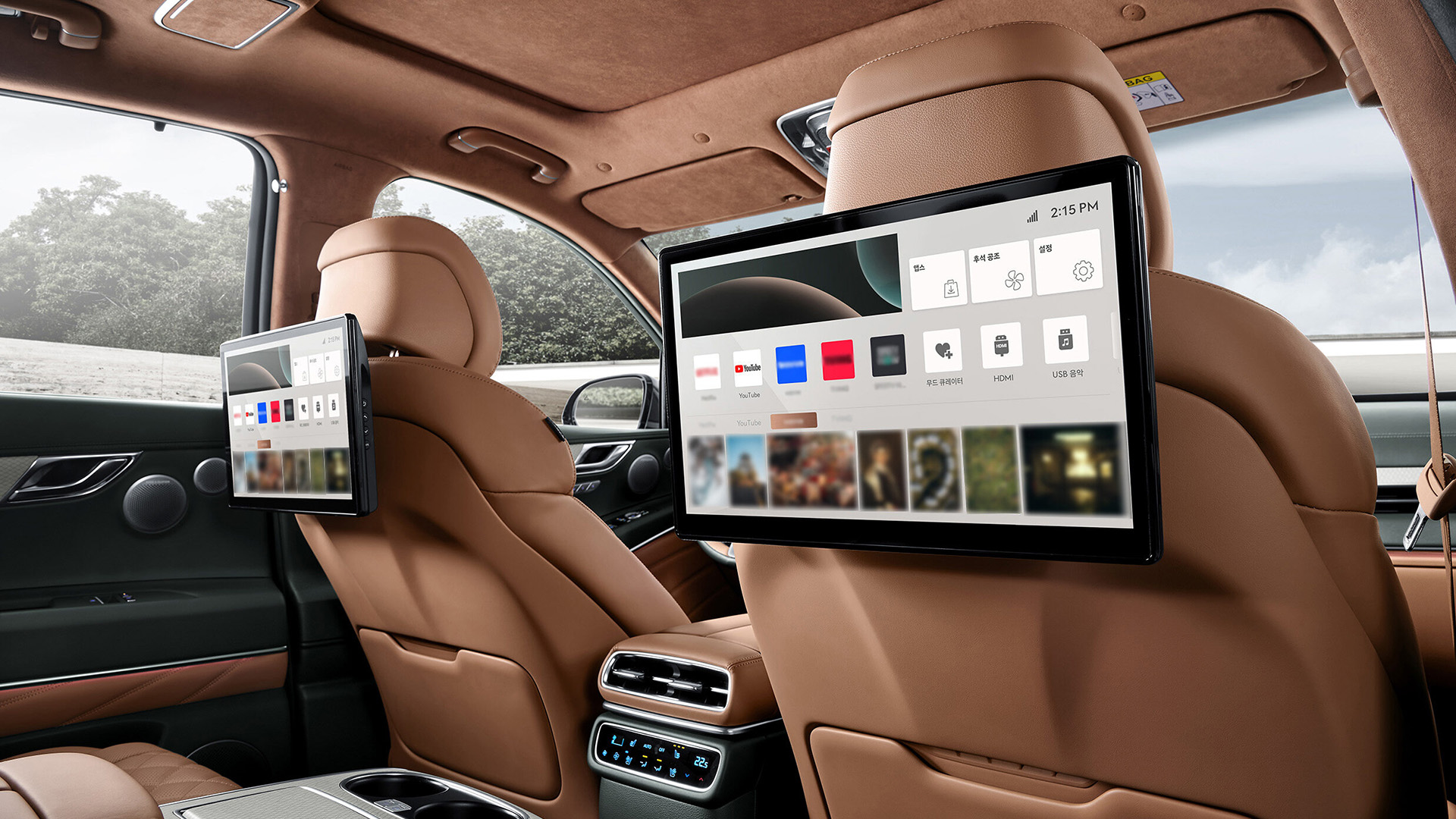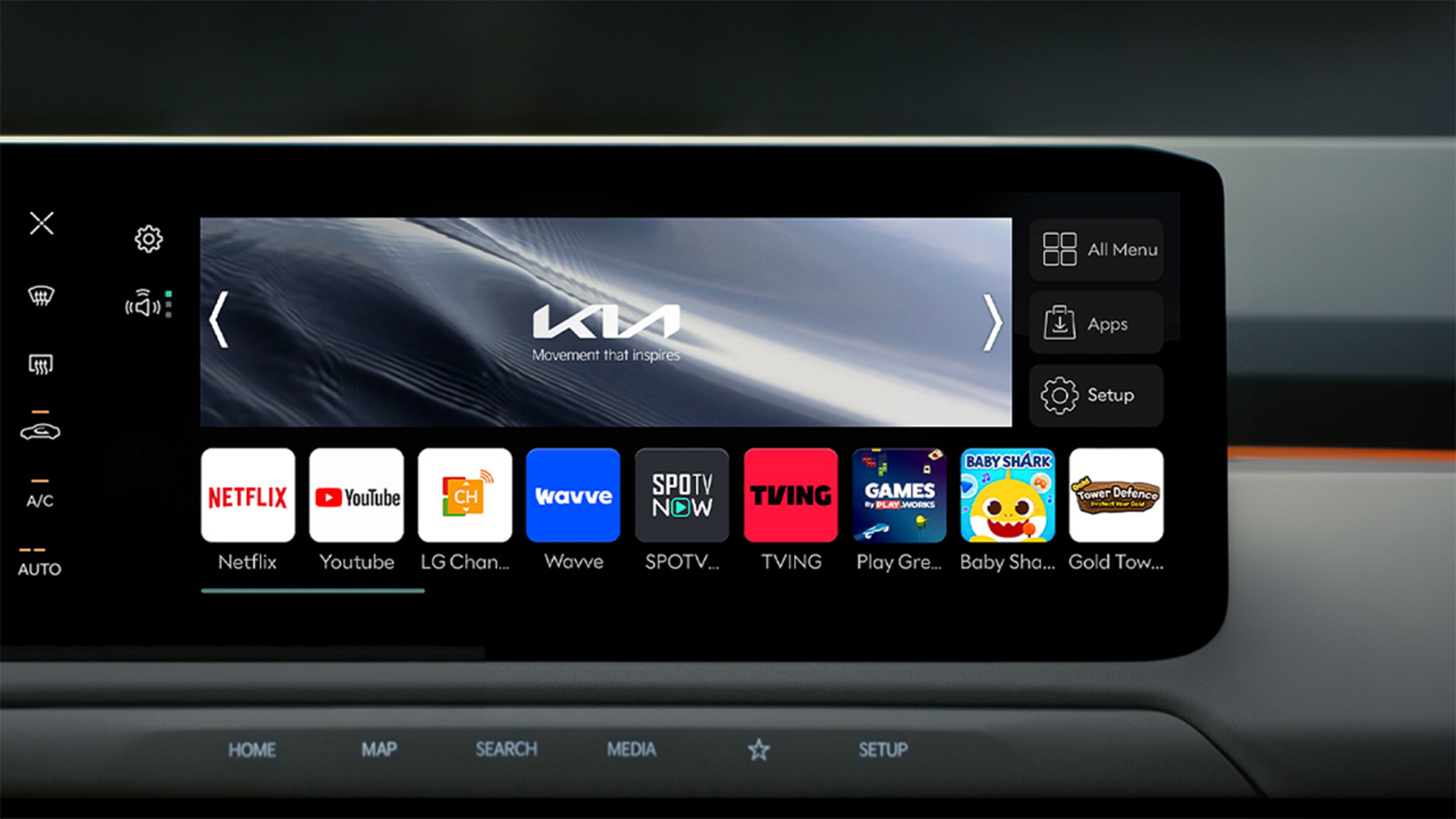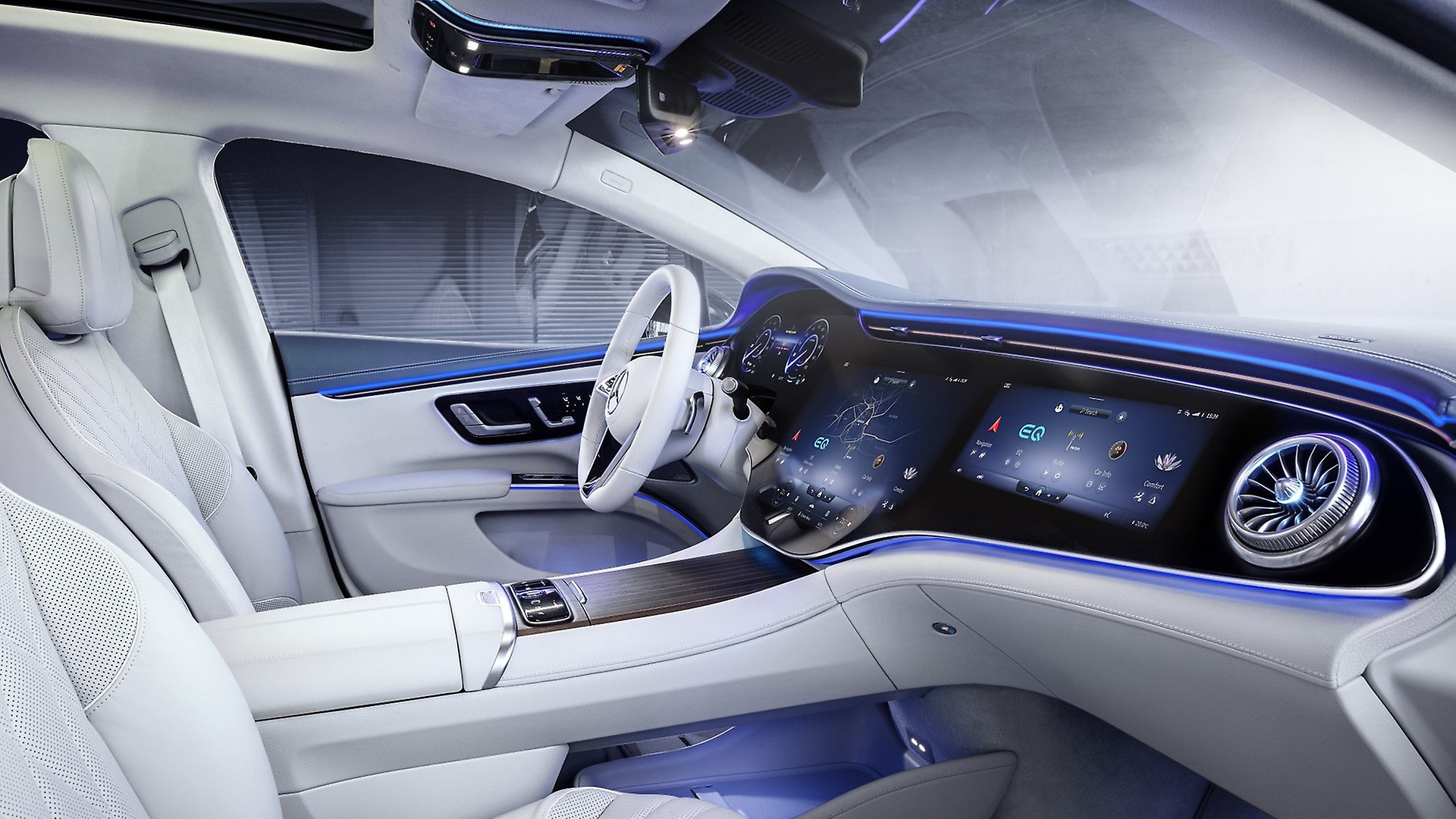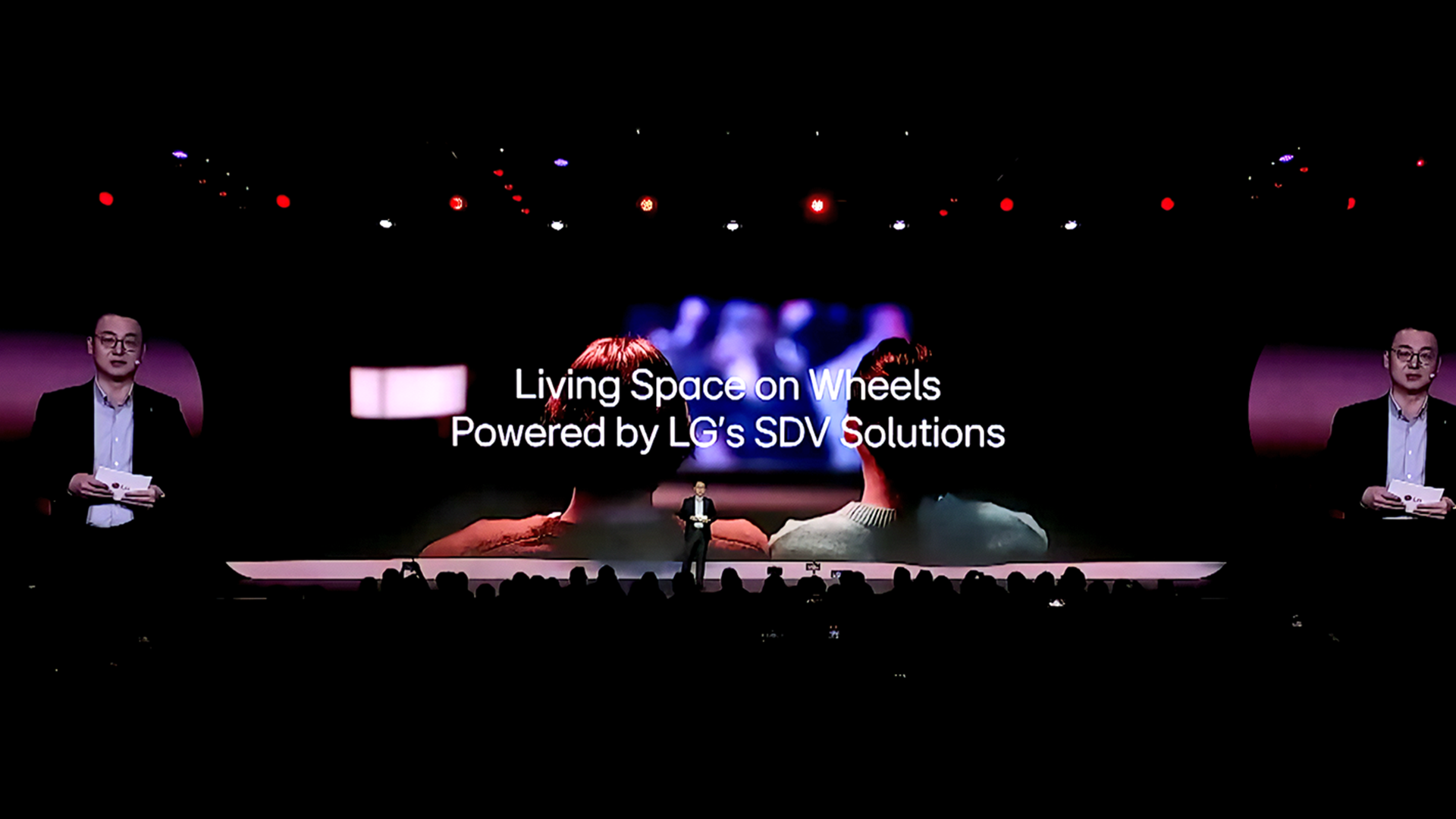

Watching TV in your car is a growing trend. Once limited to retro-fitted rear screens to keep the kids occupied on long journeys, now it’s possible to stream the latest Netflix or YouTube shows to just about any seat, and behind a lot of that technology is one of the biggest names in TV – LG.
The growth of car infotainment systems, including the physical growth in the size of the display screens, has made the prospect of watching a TV show or movie in the car more appealing. When parked up, or charging your EV, even the driver can enjoy high definition entertainment on the centre screen.
Front passenger screens also provide more opportunity for watching movies on the move – with clever tech that stops the driver from watching it too. That is at least until Level 3 autonomous systems really take off and drivers can also sit back and watch the show.

LG might be best known for its home technology, including some of the best TVs on the market, but it also has a very large automotive division. Roughly 10-12% of the revenue made by LG Electronics actually comes from its telematic units, infotainment displays and other in-car tech. The really clever stuff, though, actually comes from its TVs.
Its TV WebOS is a user interface that provides access to a range of streaming services and apps to provide video content, podcasts, games and entertainment for its consumer televisions. However, that same technology is being used to power the streaming in many premium vehicles.
The likes of Kia and Hyundai use a white-labelled version of LG’s TV WebOS system to deliver its streaming and monetised content to users. The platform blends seamlessly into the rest of the operating system and doesn’t feature any LG branding. However, it’s LG’s experience in working with these streaming services for its TVs that allows it to do things that would be nearly impossible for the automakers to do on their own.

It’s not just video though. LG’s experience in sound processing – used for its soundbars – is also being employed on some systems. Premium speaker brands have long been a norm in cars and more top-end audio companies, such as Bose, KEF and Bowers & Wilkins are proudly on display inside some of the best EVs and premium cars. It’s almost a shame that the brands don’t do the same for its TV services.
Get all the latest news, reviews, deals and buying guides on gorgeous tech, home and active products from the T3 experts
Valentin Janiaut is the Software Solution Task Lead for LG Vehicle Component Solutions (VS) Company and has played a key role in managing and launching award-winning infotainment systems for major European automotive OEMs. He says that LG offers a huge advantage to automakers. “OEMs have a difficult relationship with the likes of Google and Amazon because they are not used to the constraints of the automotive industry. I think sometimes their timeline expectations are not very aligned with the timeline and expectations of big car makers.”
While many users still revert to a mirrored experience from their phone for their entertainment, using CarPlay or Android Auto, Janiaut says that this is only temporary, and ultimately users want to use a native system. “[Carplay and Android Auto] are the easiest way to give access to the features that customers want,” says Janiaut. “In the TV business, for many years, Chromecast technology or home mirroring technology was the best way to access streaming services for a lot of people. But nowadays, people prefer to use the native system, because we found a way to offer better features, better integration.”

According to Janiaut, the way we interact with our TVs is closer to how we interact with car screens than a mobile phone app is – not least because the display is further away. “A lot of time we just use the same, rendering it on the display, but that doesn't work.”
The reason for this, Janiaut says, is that we haven't found the right way to bring those services to the car. “Key experiences, whether it's music, audio content, video content, productivity, gaming, shopping experiences, are still being done with your phone. Even booking a parking spot, or ordering a coffee from Starbucks, despite them being features that could be active in your car.”
LG sees a huge future in car entertainment and its vision of a ‘living space on wheels’ shows just how much potential there is in it. “I think because of the size of the display, the voice assistant and all the ways to interact, there's a great opportunity to have a real experience when you're in your car, says Janiaut. “Eventually, we will reach some kind of smart car, but in a very sci-fi way, where the car communicates with you, engages with you, and reacts to you. That's the kind of software we’re trying to build for the audience.”
As T3's Editor-in-Chief, Mat Gallagher has his finger on the pulse for the latest advances in technology. He has written about technology since 2003 and after stints in Beijing, Hong Kong and Chicago is now based in the UK. He’s a true lover of gadgets, but especially anything that involves cameras, Apple, electric cars, musical instruments or travel.
